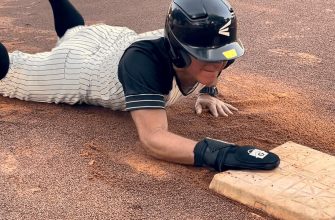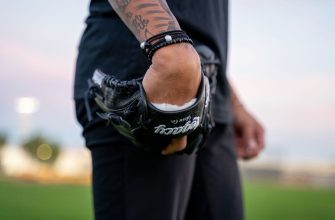To get the right glove size, you need to measure it accurately. Knowing the proper sizing techniques will help you get a comfy and secure fit.
Here are some factors to consider:
- Measure the length from the top of the index finger pocket to the heel.
- Also, measure the circumference of the wrist opening.
Use a flexible tape measure for accuracy. Start at the bottom corner of the index finger pocket and extend to the heel. Note down the length in inches or centimeters. Wrap the tape measure around your wrist to measure the circumference.
Different brands have different sizing charts, so check their guidelines before buying. Don’t go just by age recommendations – focus on actual measurements.
Gloves should be snug, but not too tight or loose. They should allow flexibility and maneuverability, and give good control over catches and throws. Adjust size per your preferences – some like it tighter, some looser.
Understanding the Different Parts of a Baseball Glove
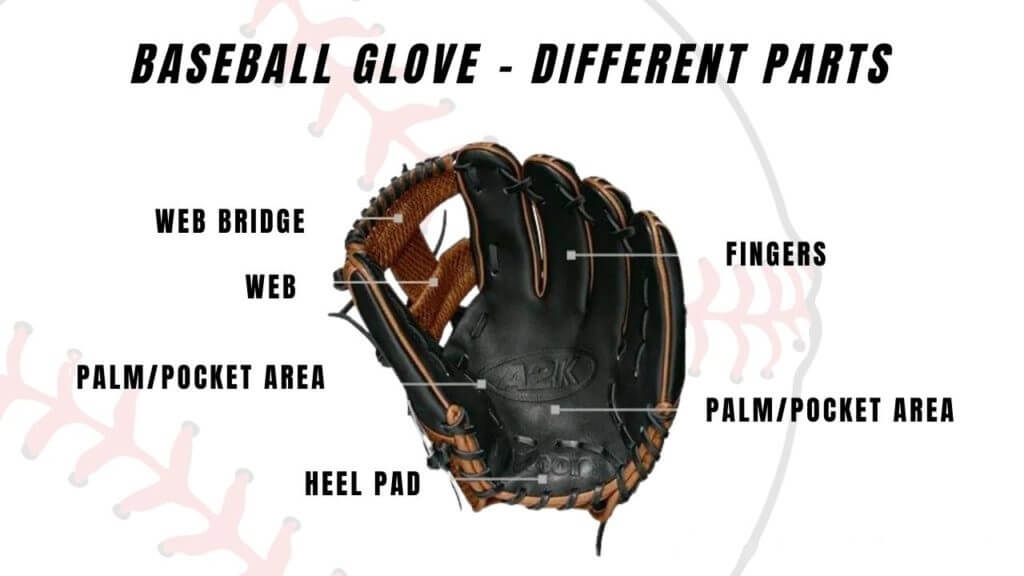
To understand the different parts of a baseball glove, dive into the section about the pocket, webbing, and wrist strap. Each sub-section will provide you with insights into these crucial components of a baseball glove. Find out how these elements contribute to the overall functionality and performance of your glove.
The Pocket
The pocket of a baseball glove is key to the catcher’s success. Let’s explore this crucial component. It’s located between the thumb and forefinger, and varies in size depending on the player’s position. The pocket’s depth and width affect how well the player can catch, grip, and control the ball.
Components of the Pocket:
- Webbing: Like a spider’s web, leather strips create a basket-like structure within the pocket, trapping and securing the ball.
- Reinforcements: Extra leather patches or stitching for support and durability.
- Lacing: Strengthens the pocket’s structure.
- Padding: Players may choose gloves with varying levels of padding. It absorbs impact when catching fastballs or hard-hit balls.
Pro Tip: Choose a glove with a deep, flexible, yet firm pocket that suits your position. A well-designed pocket improves your ability to catch, retrieve, and control balls.
The Webbing
The webbing of a glove varies with a player’s position. Infielders go for open-web patterns for quick ball transfer, while outfielders prefer closed-web designs for better ball retention.
Materials used for webbing range from leather to synthetic materials like mesh or vinyl. Each provides its own benefits such as durability, flexibility, and moisture resistance.
Web lacing is needed to attach the webbing to the rest of the glove. It increases strength and allows players to adjust tension.
Weaving techniques like single post, dual post, modified trapeze, H-web, and I-web provide different levels of support and versatility.
The size and depth of the pocket formed by the webbing affects catching abilities. Players can customize webbing tightness and shape to reach optimum performance.
Some manufacturers have patented unique web designs. For example, Rawlings patented their “Basket-Web” design in the 1960s. This shows how important The Webbing is to a glove’s function and performance.
A wrist strap is like a cufflink for the glove – it keeps it in place, so you don’t end up handless!
The Wrist Strap
The wrist strap of a baseball glove is often overlooked, yet plays a crucial role in ensuring a secure and comfy fit. It’s usually made of tough materials such as leather or synthetics, and is adjustable for customizing the fit to the player’s hand size and preference. It’s fastened with Velcro or buckle closure, providing simplicity and quick adjustments during play. Some gloves have an extended strap for extra protection and stability.
This detail can make a huge difference in a player’s performance. It helps the glove stay in place during intense play, allowing players to confidently catch and handle balls. When selecting a glove, pay attention to the wrist strap’s quality and adjustability. This not only boosts performance, but also reduces the risk of injuries. Measuring the glove’s size is key – ’cause when it comes to baseball, you need a glove that fits perfectly!
Measuring the Size of a Baseball Glove
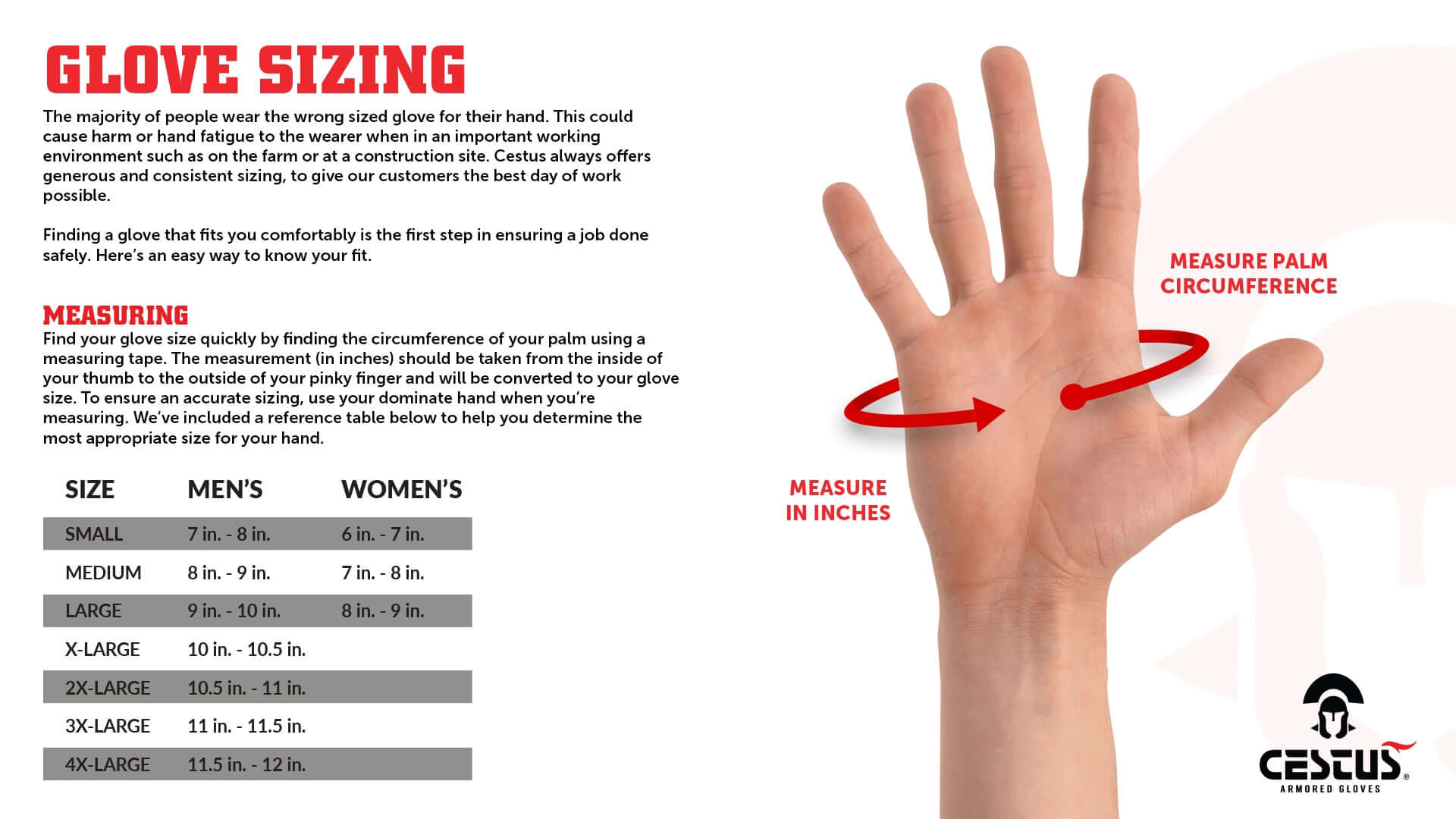
To ensure you get the perfect fit for your baseball glove, measuring its size is crucial. With “Measuring the Size of a Baseball Glove,” we’ll guide you through the process step by step. First, we’ll cover “Measuring the Hand Size,” followed by “Determining Position-Specific Glove Size,” and finally, we’ll discuss “Using Manufacturer Guidelines for Sizing.” Get ready to find the ideal glove for your game!
Measuring the Hand Size
Measuring hand size is key to selecting a baseball glove that fits and performs optimally. Knowing the right measurements can help players find a glove that’s comfortable and offers control while playing.
To measure accurately, look at the length from the base of the palm to the middle finger’s tip. Plus, measure the circumference of the widest part of the hand. This will allow you to figure out the ideal glove size and improve your game.
Here’s a table with different hand sizes and their accompanying recommended glove sizes:
| Hand Size | Recommended Glove Size |
|---|---|
| Small | 11″ – 11.25″ |
| Medium | 11.25″ – 11.5″ |
| Large | 11.5″ – 12″ |
Bear in mind, these are just general guidelines. Preferences often vary. Use them as a starting point for finding the right size.
Then, factor in other elements like position played and personal preference. For example, outfielders may prefer larger gloves for better reach and catchability. Infielders may go for smaller gloves for quicker transfers and sharper fielding.
Also, gloves tend to break in over time. So, a slightly tighter glove can be molded to fit your hand contours, giving you a more personalized feel.
Therefore, it pays to measure hand size accurately, consider different factors, and find the right glove for your performance and comfort. So, measure up and make the most of your game!
Determining Position-Specific Glove Size
To get the ideal baseball glove size for your position, follow this 3-step guide:
- Measure your hand. Wrap a tape measure around your dominant hand, just above the knuckles. Record the measurement in inches.
- Work out the ideal size range. Infielders need 11.25-12 inch gloves for better control and quick transfers. Outfielders go for 12.5-13 inch gloves, to get more reach and catching area.
- Try on gloves within your range. Go to a sports shop and try different sizes for comfort and fit. Personal preference plays a role, too.
Also, remember these tips:
- Infielders don’t need extra padding. It slows down transfers.
- Infielders need closed web designs for ball grip and quicker transfers.
- High-quality leather gloves need break-in time.
- Different manufacturers have slightly different sizes. Try different brands.
Finding the perfect glove will help your performance, and give you the right fit and comfort. Don’t trust ‘one size fits all’ gloves!
Using Manufacturer Guidelines for Sizing

Gloves for baseball come in a range of sizes, and it’s important to find the one that fits best for optimal performance. Manufacturers provide guidelines to help players choose the right size for their position and age. This allows them to handle and catch the ball with ease due to a comfortable fit.
The table below shows the manufacturer’s sizing guide for baseball gloves:
| Position | Age Range | Glove Size |
|---|---|---|
| Infield | 5-8 yrs old | 9-10 inches |
| Infield | 9-13 yrs old | 10-11 inches |
| Infield | High school/adult | 11.5-12 inches |
| Outfield | 5-8 yrs old | 9-10 inches |
| Outfield | 9-13 yrs old | 10.5-11.5 inches |
| Outfield | High school/adult | 12-13 inches |
These guidelines are backed by extensive research and feedback from professionals, coaches, and equipment experts. They take into account factors like hand size, finger length, web spacing, pocket depth, and overall fit; all to help the player’s performance.
It’s essential to note that these guidelines are only a general recommendation and might differ depending on personal preferences. Some players might prefer a tighter or looser fit based on their playing style or comfort. Also, glove sizes can vary between manufacturers due to design and material differences.
The history of baseball gloves goes back to the early days of the sport, when bare-handed catches were the norm. Over time, players began using leather pieces sewn together as makeshift gloves. Later, professionals started using specialized gloves, leading to various sizes and designs.
Finding the perfect glove size is like finding the right partner – it takes time, patience, and a lot of trial and error.
Choosing the Right Fit
To ensure you choose the right baseball glove size, follow these steps for a perfect fit. Try on different sizes, check for proper finger and thumb length, and ensure a snug but comfortable fit. These sub-sections will guide you through the process effectively.
Trying on Different Sizes
Don’t fear the daunting task of finding the perfect fit for clothing! Follow these 6 steps to ensure you choose the right size every time.
- Measure Yourself: Use a tape measure to take accurate measurements of your bust, waist, and hips.
- Consult Size Charts: Compare your measurements with the brand’s recommended size range.
- Start with Your Usual Size: Try on the size you typically wear.
- Experiment with Up or Down Sizes: If your usual size doesn’t feel right, try other sizes.
- Assess Comfort and Flattering Fit: Check how it feels on your body. Does it allow for movement? Does it emphasize your best features?
- Seek Professional Assistance: If you need guidance, ask trained staff for advice.
Different items may require different sizes due to style, fabric, and cut. Consider potential shrinkage after washing or stretching over time. Embrace the trial-and-error process and soon you’ll be an expert!
Checking for Proper Finger and Thumb Length
- Measure your fingers and thumbs precisely. Use a ruler or tape measure.
- Notice the balance between them. A well-fitting glove should fit this.
- Try different sizes and styles.
- Make sure you get the right size for the activity or sport.
- Room at the fingertips should be enough for movement, but still snug around the palm.
- Finding the perfect fit is like looking for a needle in a haystack, but when you do, it’s like slipping into a cloud.
Ensuring a Snug but Comfortable Fit
To find the perfect fit, comfort and snugness are key.
Here are three simple steps to nail the ideal fit:
- Measure your body accurately. Use a measuring tape for chest, waist, hips, and inseam length. This will help you pick the right size and ensure a snug fit.
- Determine your body shape and go for styles that flatter it. For example, if you have an hourglass figure, opt for dresses/tops that cinch at the waist. If you have an apple shape, go for A-line skirts/empire waist dresses. Knowing your body shape will help you select garments that fit well and enhance your features.
- Don’t get fixated on one size label. Try on different sizes and brands. Comfort should be prioritized over sticking to one size. Pay attention to small details like fabric composition and care instructions. Familiarize yourself with proper care methods to maintain the fit of the garment.
Did you know? Wearing clothes that fit properly can boost confidence levels! So make sure to choose the right fit and walk with confidence!
Additional Considerations
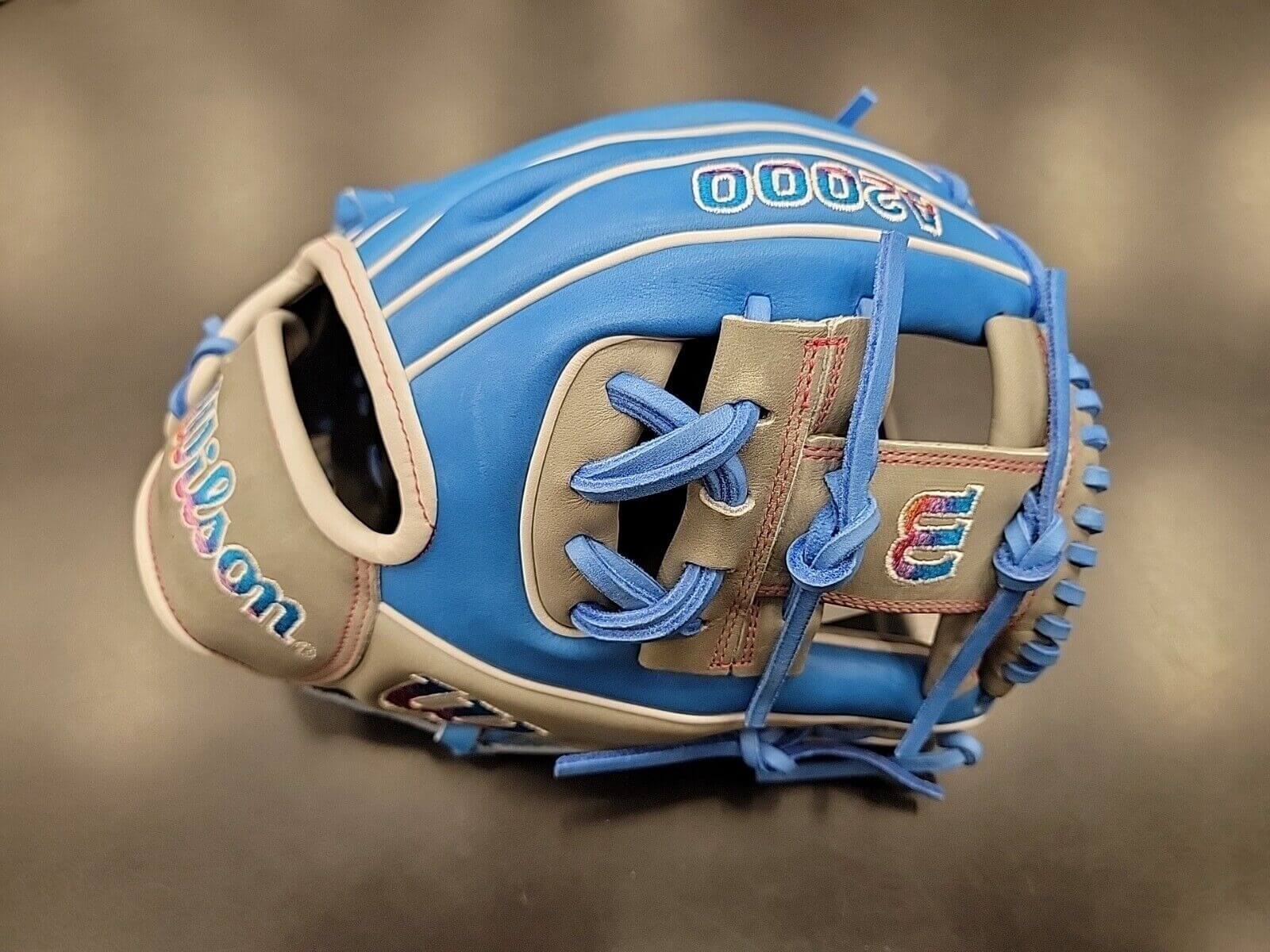
To ensure a well-fitting baseball glove, dive into the additional considerations that come into play. Taking into account personal preferences, considering the break-in period, and seeking professional guidance are key aspects to navigate. Each sub-section offers specific insights that contribute to finding the perfect glove for your needs.
Taking into Account Personal Preferences
Taking personal preferences into account is essential when it comes to decisions. This enables customization and guarantees individuals are content with the result.
Here, we put forward a table featuring some key factors to mull over:
| Factor | Importance | Explanation |
|---|---|---|
| Budget | High | Check that the decision is in line with financial resources available. |
| Time Availability | Medium | Think about how much time can be devoted to the decision-making process. |
| Personal Values | High | Ensure the decision goes with one’s core beliefs and principles. |
| Personal Interests | Medium | Bear in mind activities or subjects that truly interest you. |
Apart from these considerations, it is important to assess other distinct particulars. For instance, thinking about cultural background and upbringing can give precious insights when making decisions. In addition, looking into long-term implications can help decide if a selection will be advantageous in the future.
To make sure personal preferences are successfully incorporated, we offer some tips:
- Perform thorough research – Explore various choices before making a decision to make sure it lines up with personal preferences.
- Ask for advice – Consult friends, family, or experts who can provide different points of view and insights.
- Recollect past experiences – Learn from past decisions and spot patterns or trends to guide future choices.
Adhering to these tips allows for a thoughtful process of taking personal preferences into account when making decisions, leading to higher satisfaction and achievement in the outcome.
Break-ins are like relationships – they’re uncomfortable, uneasy, and you wish they won’t finish with your possessions stolen.
Considering the Break-in Period
The break-in period is essential when using a new product. Follow the manufacturer’s instructions carefully for optimal performance. Allow the product to adjust and settle into its intended purpose. Avoid pushing it beyond recommended limits. Each product may have a different break-in period. Refer to the manufacturer’s guidelines for specifics.
Also, document any changes in performance. This can be valuable feedback for the manufacturer. Taking precautions and allowing time for this period can lead to a longer product lifespan and better performance. So, be patient and attentive for the best results!
Seeking Professional Guidance
Reach out to industry-specific mentors for tailored advice. Hire a consultant who specializes in the area you need help with. Attend workshops or conferences with renowned speakers for valuable knowledge. Join professional associations or networks to access resources and expertise.
By seeking professional guidance, you open up new perspectives and opportunities. Investing in expert advice can help steer you towards success while avoiding potential pitfalls. Laughter is the only thing that can make a conclusion less depressing than it already is – so keep reading!
Frequently Asked Questions
Q: How do I measure my baseball glove?
A: To measure your baseball glove, place the glove on a flat surface and measure from the tip of the index finger to the heel of the glove, following the contour of the palm.
Q: What size baseball glove should I get?
A: Your glove size will depend on your position. Infielders typically use gloves between 10 and 11.5 inches, while outfielders use gloves between 12 and 12.75 inches. Pitchers use gloves between 11.5 and 12 inches.
Q: Can I only measure the length of my baseball glove?
A: No, it is also important to consider the width of the glove. The wider the glove, the better your chances of catching the ball. A glove with a wider pocket is preferred for catching pop flies and grounders.
Q: Is it better to have a smaller or larger glove?
A: It depends on personal preference and position. In general, a smaller glove is better for infielders who need to field the ball quickly, while a larger glove is better for outfielders who need to catch fly balls.
Q: How do I know if my glove is too small or too big?
A: A glove that is too small may not provide adequate coverage and may be difficult to close, while a glove that is too big may be heavy and difficult to control. It is important to try on different sizes to find the best fit.
Q: How do I break in my new baseball glove?
A: To break in your new baseball glove, apply a small amount of oil or glove conditioner to the leather and work the glove by squeezing and flexing it. You can also place a ball in the pocket of the glove and wrap it with rubber bands to help shape the pocket.
Conclusion
- Measuring a baseball glove is a must for the best fit. Follow the steps here and you’ll get the correct size. Start at the top of the index finger and go to the bottom of the heel.
- Think about different types of gloves, too. Infield, outfield, catcher’s mitts – each one needs a different size and shape. It’ll help you get the perfect fit.
- Youth and adult gloves can vary in size too. Youth gloves tend to be smaller with shorter fingers and narrower wrist openings. So, measuring is even more important when buying for younger players.
- Now for a story to show why measuring matters. There was a player who bought a glove without measuring. He thought all gloves were the same. But, when he tried it at practice, it was way too big. He found it hard to catch balls properly. He learned his lesson – measure before buying!


